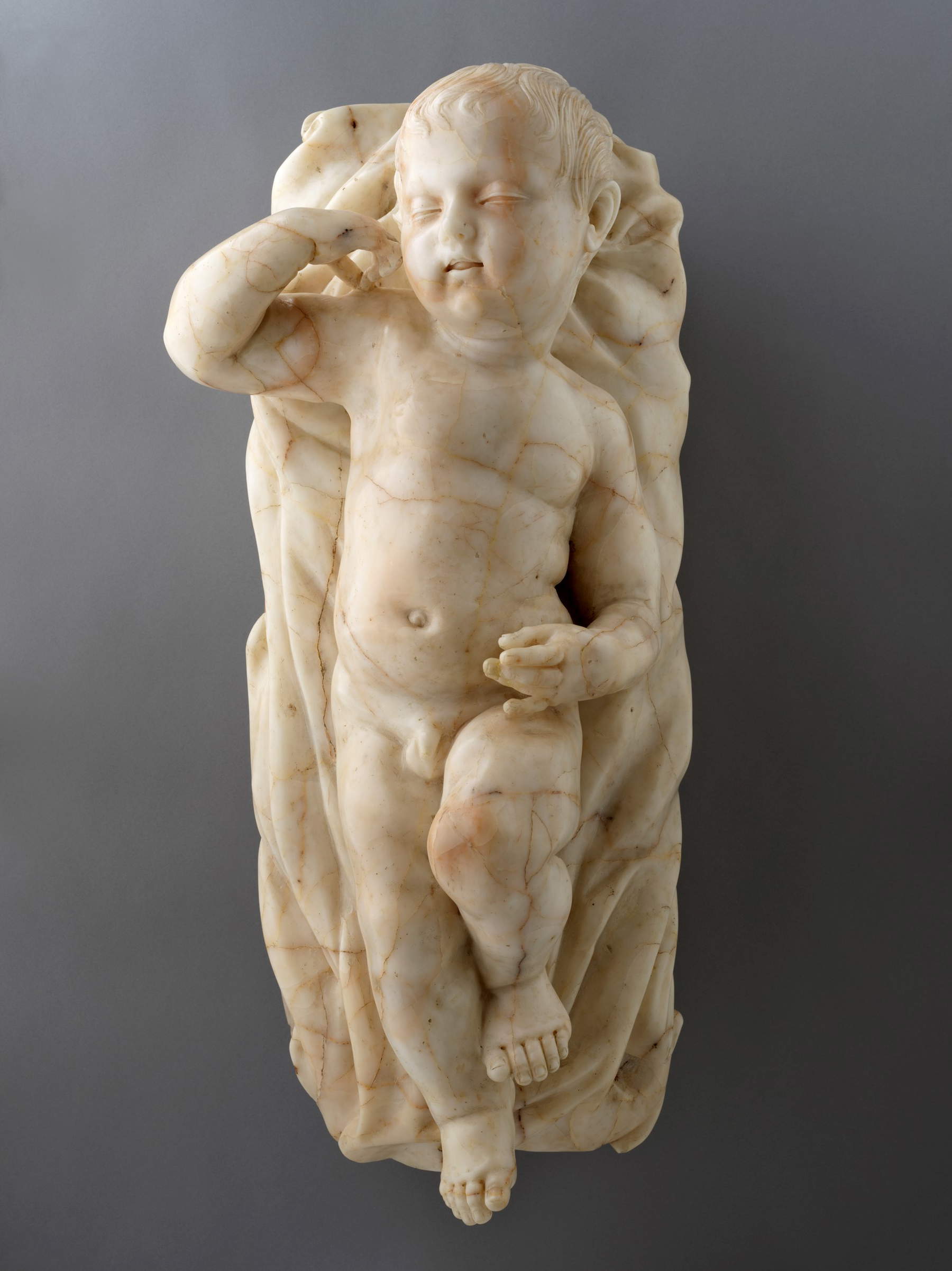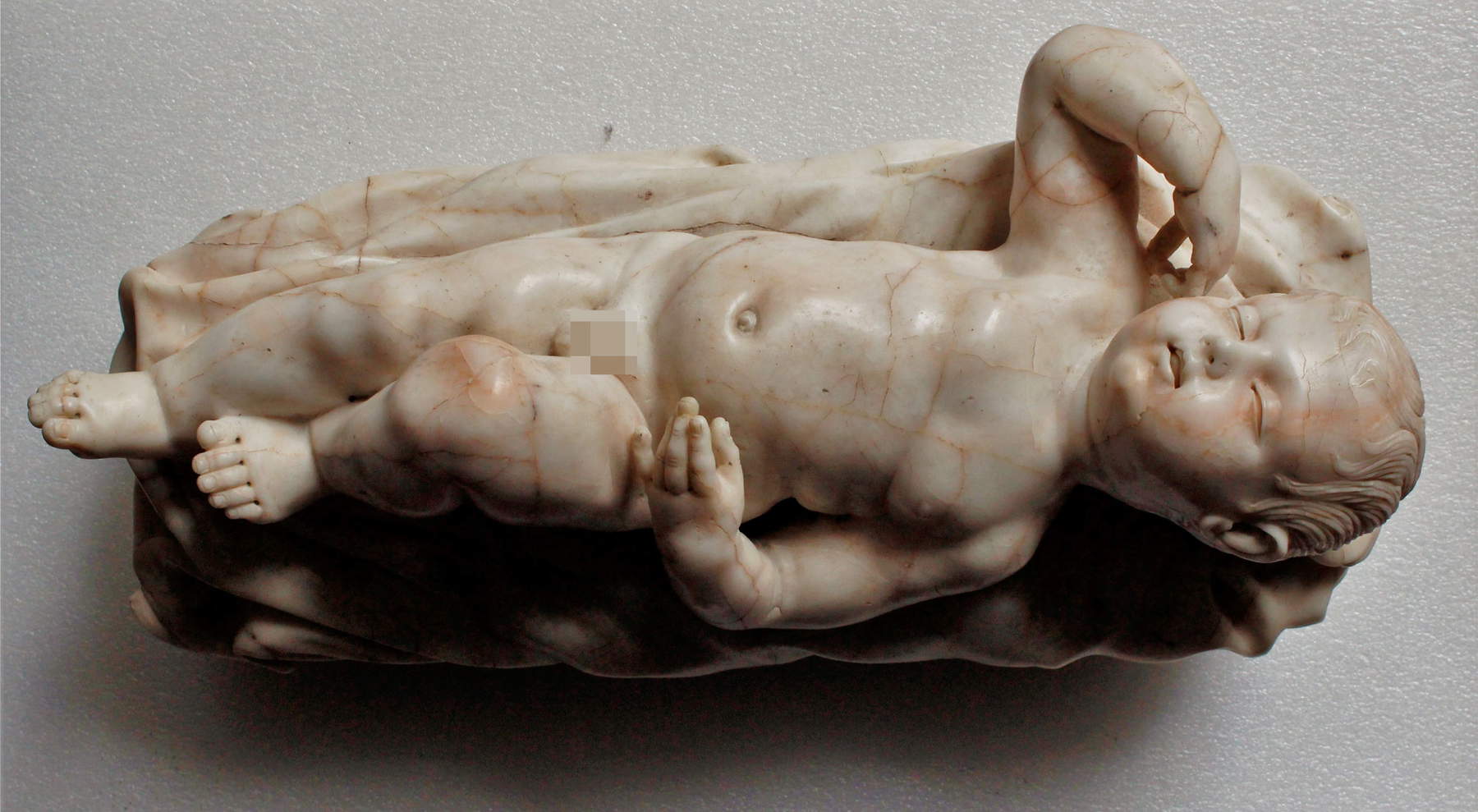The “little prince” of the Royal Palace of Caserta is finally revealed to the public. It was early 2021 when, in the storerooms of the Bourbon residence, a splendid marble portrait by Giuseppe Sammartino (Naples, 1720 - 1793), the famous author of the Veiled Christ in the Sansevero Chapel, was discovered. It was the portrait of the “Real Infante,” or Charles Titus of Bourbon-Naples, eldest son of Ferdinand IV of Bourbon and his wife Maria Carolina of Austria: the work was known from sources, but it was thought to be lost. Now, from May 27 to Sept. 11, the public can admire the masterpiece as part of the exhibition The Little Prince. Giuseppe Sammartino at the Reggia di Caserta, a review with the contribution of the Friends of the Reggia and set up in the Palatine Chapel of the Royal Palace.
The exhibition takes its cue precisely from the discovery, in the deposits of the Vanvitellian Complex in early 2021 (although the announcement was made in the fall), of the life-size marble portrait of the infant. The work, on which rigorous research has been conducted, was created at the instigation of Queen Maria Carolina who, as a vote of grace for having given birth in 1775 to the male who would ensure the dynastic continuity of the Bourbons on the throne of Naples, commissioned a life-size portrait of the newborn Prince Charles Titus from the Kingdom’s first sculptor, Giuseppe Sammartino. The portrait was later translated into silver to be dedicated to St. Francis of Paola, a saint to whom the queen was particularly devoted. Having lost the silver ex voto, studies on Sammartino, while recording its existence, have considered the original portrait lost as well. In addition to stylistic comparisons with other works by the artist, such as the angels holding up the funeral monument to Filippo di Borbone in Santa Chiara or those appearing next to Cardinal Agostino Sersale in his dedicatory monument in Naples Cathedral, made in those years, the attribution of the sculpture to Sammartino finds confirmation in the post-unification inventories of the Royal Palace of Caserta. These, next to the description as Sleeping Putto, bear precisely the name of the major Neapolitan sculptor of the second half of the eighteenth century.

The object appears to have been in the collections of the Royal Palace of Caserta since at least 1879. Iconographic studies have led to the exclusion that it could be a putto or the Baby Jesus and should more correctly be identified with a sleeping child, inspired by the classical allegory of the Sleep of Innocence. Having undergone careful restoration in the museum’s workshops, Giuseppe Sammartino’s Portrait of the Royal Infant Charles Titus of Bourbon is the rediscovery around which the exhibition brings together works of various kinds related to the days that saw the birth of the heir to the throne of the Kingdom of Naples. The exhibition thus becomes an opportunity to understand the importance of the historic event, to analyze the artist’s relations with the Bourbon royal house, to study other hitherto ignored works that can be traced back to him and to analyze his portraits, a genre that Sammartino worked on though, several traces of which remain in works of high value such as the Portrait of Livia Doria Carafa, Princess of Roccella, from a private collection.
The exhibition project, curated by Valeria Di Fratta and Tiziana Maffei, was defined with scientific contributions from Rosanna Cioffi, Riccardo Lattuada, Pierluigi Leone de Castris and Anna Maria Rao. Twenty-six art objects from Italian museums and private collections will be on display, including works by prestigious 18th-century artists such as Liani, Celebrano, Diano, Fischetti and Batoni, whose Allegory of the Death of the Two Children of Ferdinand IV and Maria Carolina, made in 1780 to commemorate the death of Princess Marianne and Crown Prince Charles Titus himself, who died in 1778, will be exhibited.
A digital section will show works conserved at foreign museums, such as Franz Linder’s Portrait of Ferdinand IV and His Family from the Kunsthistorishes Museum in Vienna (now at Schloss Hof) or Giuseppe Bonito’s Portrait of Queen Maria Carolina with the Infanta Maria Teresa from the Cerralbo Museum in Madrid. In a specially prepared multimedia environment, it will be possible to observe in enlarged detail the Portrait of the Real Infante in comparison with other works by the Neapolitan sculptor. In addition, the techniques of preventive analysis performed on the statue by the Departments of Earth, Environmental and Resource Sciences, Chemical Sciences and Biology of the Federico II University of Naples, and the methodology applied in the conservation restoration work carried out in the laboratories of the Royal Palace of Caserta will be recounted. The exhibition will also welcome the 3D printed reproduction of the artifact, created by CeSMA - “Centro Servizi Metrologici e Tecnologici Avanzati” of the University Federico II of Naples with the contribution of Facto 3D.
The exhibition catalog, published by Colonnese and richly illustrated, will include contributions by Giangiotto Borrelli, Rosanna Cioffi, Almerinda Di Benedetto, Carlo Knight, Riccardo Lattuada, Anna Maria Rao, Charles Beddington, and Lucio Tufano, among others.
 |
| Giuseppe Sammartino's rediscovered masterpiece on display at the Royal Palace of Caserta |
Warning: the translation into English of the original Italian article was created using automatic tools. We undertake to review all articles, but we do not guarantee the total absence of inaccuracies in the translation due to the program. You can find the original by clicking on the ITA button. If you find any mistake,please contact us.